What are ISO Standards?
The International Organization for Standardization (ISO) is an independent, non-governmental entity that develops and publishes standards to guarantee that products, services, and systems are safe, reliable, and of high quality. Established in 1947, ISO has grown to encompass over 25,000 standards that span a wide range of industries, including technology, manufacturing, material testing and environmental management. ISO standards facilitate international trade by creating a unified set of guidelines businesses can follow to meet global expectations.
ISO’s Purpose and Reach
ISO standards serve as a vital tool for maintaining consistency, safety, and efficiency in a variety of fields. ISO standards provide a framework for material testing procedures that guarantee accuracy, reproducibility, and international comparability. This is especially relevant in industries like manufacturing, aerospace, automotive, construction, and energy, where material properties such as strength and durability are of vital importance.
ISO’s reach is truly global, with 170 member countries participating in standards development and dissemination. These countries are represented by national bodies that contribute to ISO’s standard-setting processes. Each standard is developed through consensus among international experts so that it reflects best practices globally. Technical committees within ISO are responsible for drafting standards in specific areas, such as the mechanical testing of metals or the testing of plastics.
Material Testing and ISO Standards

In material testing, ISO standards contribute to the standardization of testing procedures, making sure that materials meet the necessary safety and performance criteria.
For instance, material testing standards like ISO 148-1 (Charpy impact testing) and ISO 6508 (Rockwell hardness testing) allow industries to have reliable methods to assess material toughness and hardness. The application of these standards is a necessity in sectors where failures of materials can have catastrophic consequences.
Moreover, ISO 6892-1 is widely used for the tensile testing of metals at room temperature, helping industries ensure that materials like steel and aluminum meet structural requirements. Similarly, ISO 527 sets guidelines for the tensile testing of plastics, an important procedure for industries that manufacture polymer-based products.
ISO continues to evolve, regularly updating its standards to reflect technological advances. Through its work, ISO fosters international cooperation and promotes innovation by providing a common language for businesses around the world to follow.
Key Categories of Testing Covered by ISO Standards
ISO standards cover a broad range of testing categories that ensure the quality, safety, and consistency of materials and processes across various industries. Below are the main categories with a focus on material testing:
1. Mechanical Testing
Mechanical testing is a necessary procedure for assessing materials’ strength, durability, and deformation properties. Commonly used standards include ISO 6892-1 for tensile testing of metals, which assures that materials like steel and aluminum meet industry-specific structural demands, and ISO 527, which applies to plastic tensile testing used in numerous sectors, such as automotive and packaging.
2. Impact and Toughness Testing
Impact testing standards measure how materials behave under sudden forces. ISO 148-1, the standard for Charpy impact testing, is used extensively to evaluate metal toughness, particularly in the automotive and construction industries.
3. Hardness Testing
Hardness testing determines material resistance to indentation and deformation. Key standards in this category include ISO 6508 for Rockwell hardness testing and ISO 6507 for Vickers hardness testing, both of which are vital for assessing metallic materials’ durability.
4. Environmental and Chemical Testing
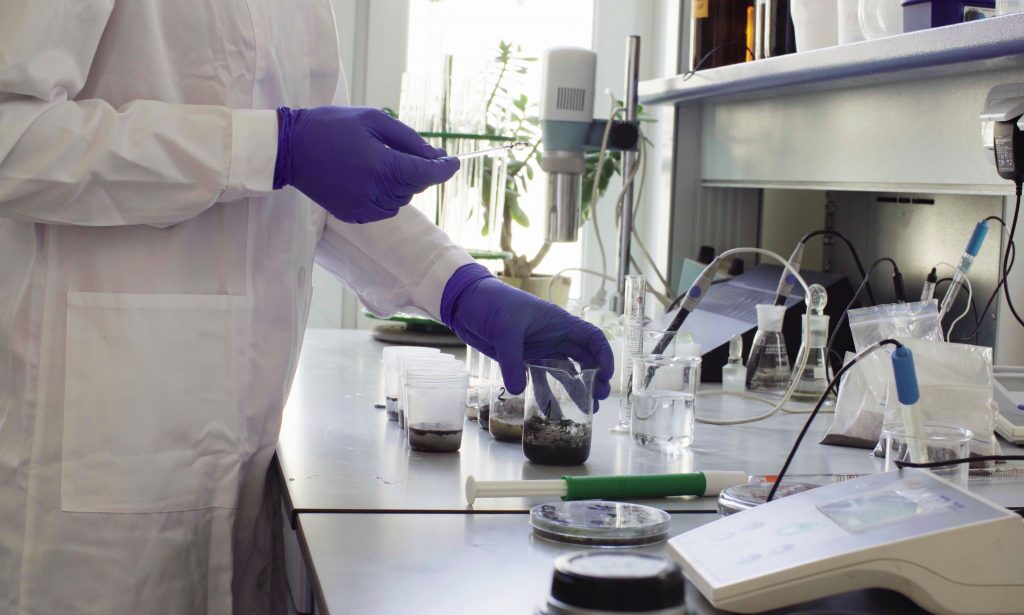
Environmental and chemical testing standards address materials’ resistance to environmental factors such as corrosion or degradation. These tests confirm that materials maintain their integrity and performance when exposed to harsh environments.
5. Dimensional Testing
Dimensional testing verifies materials’ physical dimensions and tolerances, ensuring compliance with precise design specifications. The first ISO standard, ISO 1, laid the foundation for standardized industrial length measurements, highlighting the importance of this category.
6. Fatigue and Creep Testing
ISO standards for fatigue and creep testing, such as ISO 1099 and ISO 204, evaluate how materials behave under prolonged stress or at high temperatures. These tests are especially important in industries like aerospace and energy, where material reliability is a top priority.
Commonly Used ISO Standards in Material Testing
While there is no definitive list of the most frequently used ISO standards, establishments involved with ISO standards often highlight the following 8 standards as the most common in material testing:
1. ISO 148-1: Charpy Pendulum Impact Test for Metallic Materials
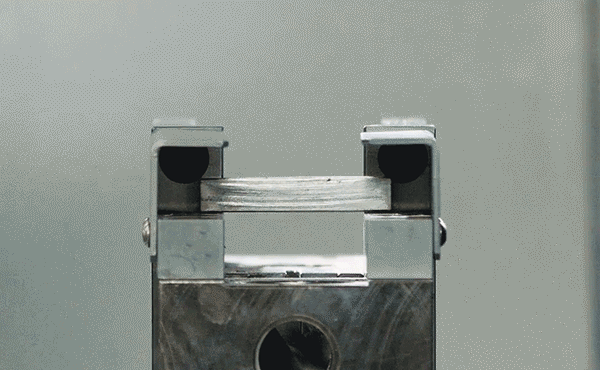 ISO 148-1 establishes the method for performing the Charpy pendulum impact test on metallic materials, used primarily to determine metal impact strength. This test is critical in assessing the material’s ability to absorb energy during a high-speed impact, offering valuable information about whether the material is brittle or tough. The Charpy test is widely applied in sectors like shipbuilding, pipeline construction, and automotive manufacturing, in which it is necessary for materials to withstand significant impacts without failing.
ISO 148-1 establishes the method for performing the Charpy pendulum impact test on metallic materials, used primarily to determine metal impact strength. This test is critical in assessing the material’s ability to absorb energy during a high-speed impact, offering valuable information about whether the material is brittle or tough. The Charpy test is widely applied in sectors like shipbuilding, pipeline construction, and automotive manufacturing, in which it is necessary for materials to withstand significant impacts without failing.
The test involves striking a notched specimen with a pendulum hammer at a controlled velocity. The energy absorbed by the material during fracture is measured, providing a clear indication of its toughness. The test can be conducted at varying temperatures, which helps assess the transition temperature at which materials shift from ductile to brittle behavior. This is crucial in applications involving low-temperature environments, such as offshore structures and cryogenic vessels.
ISO 148-1 specifies two types of notches—V-notch and U-notch—and details the preparation and positioning of specimens for consistency. The standard provides guidelines for conducting the test under ambient conditions (typically 23°C) but allows testing at different temperatures to simulate operational conditions.
2. ISO 6508-1: Rockwell Hardness Testing for Metallic Materials
ISO 6508-1 defines the Rockwell hardness test method, which is commonly used for measuring metallic materials’ hardness. This test assesses material resistance to indentation by using either a diamond cone or a steel ball indenter, applied under a specific load. The depth of the residual indentation is measured to determine hardness.
The test procedure includes applying a preload followed by a major load for a specified dwell time. After removing the load, the permanent indentation depth is recorded. Rockwell testing is quick, cost-effective, and does not require advanced specimen preparation, making it ideal for quality control.
3. ISO 6507-1: Vickers Hardness Test for Metallic Materials
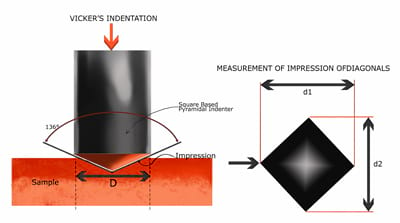 ISO 6507-1 defines the Vickers hardness test as another method for determining metallic materials’ hardness. This test method is highly adaptable and can be applied to an extensive range of metals, including hard metals and cemented carbides, making it suitable for many different industrial applications.
ISO 6507-1 defines the Vickers hardness test as another method for determining metallic materials’ hardness. This test method is highly adaptable and can be applied to an extensive range of metals, including hard metals and cemented carbides, making it suitable for many different industrial applications.
The test uses a diamond pyramid indenter with an apex angle of 136°, which is pressed into the material under a defined load. The resulting indentation is measured optically by calculating the diagonals of the imprint left by the indenter. The hardness is then calculated based on the applied test force and the indentation surface area. One key advantage of the Vickers test is that it provides consistent results with different hardness ranges and materials, which makes it ideal for comparing a wide range of metals.
This method also supports tests at varying force levels, from microhardness (low-force tests) to higher loads, and is particularly useful when measuring small or thin specimens. ISO 6507-1 provides guidance for conducting tests under standardized conditions to achieve repeatable and comparable results.
4. ISO 6892-1: Tensile Testing of Metallic Materials at Room Temperature
ISO 6892-1 is one of the most widely used standards for the tensile testing of metallic materials. It provides a comprehensive framework to measure key mechanical properties such as yield strength, tensile strength, and elongation at break, all of which are critical for assessing a material’s performance under uniaxial tensile stress.
A number of industries, such as aerospace, automotive, and construction, use this standard to verify that materials meet structural and durability requirements. Testing must be conducted under tightly controlled conditions, typically at 23°C with a tolerance of ±5°C, to guarantee consistency and reproducibility in the results.
ISO 6892-1 specifies different methods to measure tensile properties, focusing on material behavior at room temperature. For materials with a distinct yield point, both the upper and lower yield strengths are determined, while for continuously yielding materials, the standard uses an offset yield method, typically at 0.2% plastic elongation.
Additionally, the standard addresses factors such as test speed, which directly impacts the measured values, as well as strain rate control methods (Method A), which significantly improve the precision of the results. Especially in industries where material performance is critical under stress, this focus on repeatability and reliability is of paramount importance.
ISO 6892-1 also outlines specific specimen types for testing, including sheets, wires, and bars, to meet the requirements of metallic materials used in industrial applications. By doing so, the results are consistent across different forms and sizes of materials, which provides a reliable assessment of their mechanical properties.
5. ISO 527-1: Determination of Plastic Tensile Properties
 ISO 527-1 is a comprehensive standard used to evaluate plastics‘ tensile properties, including critical characteristics such as tensile strength, modulus of elasticity, and elongation at break. There are a number of industries where this standard is widely applied in order to make certain that plastic materials can perform under stress without failing.
ISO 527-1 is a comprehensive standard used to evaluate plastics‘ tensile properties, including critical characteristics such as tensile strength, modulus of elasticity, and elongation at break. There are a number of industries where this standard is widely applied in order to make certain that plastic materials can perform under stress without failing.
The test method specified in ISO 527-1 involves pulling a specimen along its longitudinal axis at a constant rate until it breaks or reaches a predetermined stress or strain. This process helps determine key properties like yield stress and strain, providing insights into how the material deforms and breaks under tension. The test can be applied to an array of plastic materials, including thermoplastics, thermosetting polymers, fiber-reinforced composites, and liquid crystal polymers.
ISO 527-1 is fundamental in comparing different materials’ performance, especially in situations where mechanical strength is critical. The standard emphasizes repeatability and precision, making certain that results from different laboratories are consistent and comparable. Various specimen types, such as dumbbell-shaped specimens, are used depending on the material being tested. Specific conditions, such as pre-load application and test speeds, are also defined to guarantee accurate results.
The ISO 527 series includes additional parts like ISO 527-2, which outlines test conditions for molding and extrusion plastics, further guaranteeing that different plastic forms are tested under appropriate conditions. As a result, it is possible to achieve consistency in results, notably when working with more specialized materials like fiber-reinforced composites or films.
6. ISO 6502: Measurement of Vulcanization Characteristics Using Curemeters
ISO 6502 details methods for determining the vulcanization characteristics of rubber compounds by using different types of curemeters, such as oscillating disc and rotorless curemeters. There is a critical need for this standard in the rubber industry since it assists manufacturers in ensuring that rubber compounds are designed to meet performance requirements before they are manufactured.
The test process evaluates key vulcanization parameters such as scorching time, optimum cure time, and maximum torque. These properties provide insight into how a rubber compound will behave when subjected to heat and pressure during vulcanization. Rubber performance in various applications, such as automotive tires, seals, and hoses, depends on this information.
ISO 6502 covers several parts:
-
Part 1: Provides an introduction to curemeters and general guidance on vulcanization measurement.
-
Part 2: Focuses on the use of oscillating disc curemeters, which measure the stiffness of a rubber compound during vulcanization.
-
Part 3: Covers the use of rotorless curemeters, which offer more precise control and reduced mechanical friction, making them highly suited to modern industrial applications.
7. ISO 9227: Salt Spray Testing
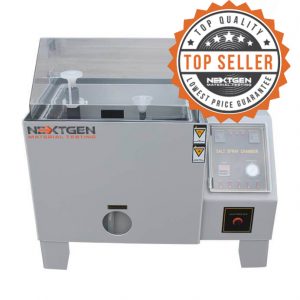 ISO 9227 is a widely recognized standard for salt spray tests, which are used to evaluate the corrosion resistance of metallic materials, coatings, and surface finishes in a controlled, accelerated environment. This test is particularly valuable for industries like automotive, aerospace, and marine, where corrosion resistance is a key factor in safety and durability.
ISO 9227 is a widely recognized standard for salt spray tests, which are used to evaluate the corrosion resistance of metallic materials, coatings, and surface finishes in a controlled, accelerated environment. This test is particularly valuable for industries like automotive, aerospace, and marine, where corrosion resistance is a key factor in safety and durability.
The test simulates a saline, corrosive environment by atomizing a 5% sodium chloride solution (neutral salt spray, or NSS) and spraying it onto test specimens within a chamber. The chamber temperature is kept at 35°C ± 2°C for most tests, such as NSS, while more aggressive versions like the acetic acid salt spray (AASS) or copper-accelerated acetic acid salt spray (CASS) increase the severity of the environment by adding acetic acid or copper(II) chloride.
-
Neutral Salt Spray (NSS): Used for testing metals, metallic coatings, and organic coatings on metallic substrates.
-
Acetic Acid Salt Spray (AASS): Commonly used for decorative coatings, like nickel-chromium on aluminum.
-
Copper-Accelerated Acetic Acid Salt Spray (CASS): Specifically used for high-end decorative copper-nickel-chromium coatings.
After exposure, the specimens are visually inspected for corrosion, including rust formation, blistering, or other surface defects. Depending on the application, more advanced evaluations like weight loss or micrographic analysis can be conducted to assess structural changes post-exposure.
8. ISO 6892-2: Tensile Testing of Metallic Materials at Elevated Temperatures
Last on our list, ISO 6892-2 defines a method for conducting tensile tests on metallic materials at elevated temperatures, typically above 35°C. Materials that are exposed to high-temperature environments and must demonstrate both strength and ductility are commonly subjected to this standard.
In the test, a specimen is heated to the desired temperature using either a furnace or an environmental chamber, making sure that the temperature remains consistent throughout both the soaking period and the actual test. The key properties measured include:
-
Proof strength (Rp): The stress at which permanent deformation occurs.
-
Tensile strength (Rm): The maximum stress a material can sustain before failure.
-
Elongation: The increase in length relative to the original gauge length.
-
Reduction of area (Z): A measure of ductility, indicated by the difference in cross-sectional area before and after the test.
The standard offers two methods, Method A and Method B, for controlling test speed. Method A is preferred when high levels of accuracy and repeatability are required. Method B allows comparisons between room-temperature and elevated-temperature results using the same strain rates.
One of the challenges of testing at elevated temperatures is that materials become more sensitive to strain rates. As the temperature rises, metals become more ductile, resulting in higher elongation values and lower strength properties due to increased atomic vibrations. Proper strain rate control, notably in closed-loop systems, is crucial for reliable and consistent test results.
NextGen’s ISO-Compliant Hardness Testing Equipment
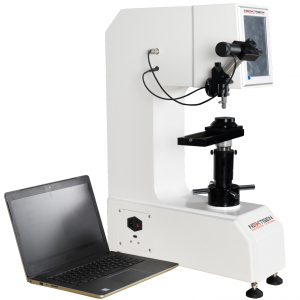 At NextGen, our extensive experience and close collaboration with clients have shown us how critical it is to have equipment that adheres to all relevant industry standards. Whether you are testing metals or rubber, our solutions are designed to meet and exceed compliance requirements, guaranteeing accuracy, safety, and reliability.
At NextGen, our extensive experience and close collaboration with clients have shown us how critical it is to have equipment that adheres to all relevant industry standards. Whether you are testing metals or rubber, our solutions are designed to meet and exceed compliance requirements, guaranteeing accuracy, safety, and reliability.
One of our flagship products, the UniGen Universal Hardness Tester, is an advanced system designed for performing hardness tests according to the Vickers, Rockwell, and Brinell methods. UniGen is built to handle modern testing lab demands, offering user-friendly features like an 8″ LCD touchscreen interface and automatic measuring software. This system complies not only with ISO standards—such as ISO 6506 for Brinell, ISO 6507 for Vickers, and ISO 6508 for Rockwell testing—but also with additional global standards like ASTM E-18, ASTM E92, and JIS Z2245, thus meeting the rigorous requirements of international markets.
The UniGen system is equipped with a closed-loop load cell, providing high accuracy without physical weights. Its modular design makes maintenance straightforward, and it handles a broad spectrum of hardness scales. The system’s automated force correction ensures precise measurements, while password-protected setup options enhance data security.
With support for large sample sizes, easy data transfer via USB, and easy integration with systems like Excel, UniGen is a complete solution for advanced material hardness testing across multiple industries. Whether you are involved in aviation, automotive, or manufacturing, you can count on this robust system to help your testing processes meet the strictest global standards while remaining highly efficient and user-friendly.
The Importance of ISO Standards in Material Testing
ISO standards contribute significantly to the assurance that materials meet safety, performance, and durability requirements for numerous industries. From mechanical testing to environmental and chemical testing, these standards provide a unified framework that promotes consistency, accuracy, and global comparability. A wide range of industries, such as aerospace, automotive, construction, and energy, rely on these standards to evaluate critical properties such as strength, hardness, and toughness, making them an integral part of the material testing process.
As we have noted here, the 8 most commonly used ISO standards highlight the breadth of testing covered by ISO standards, including ISO 6892-1 for tensile testing of metals and ISO 527-1 for plastics. By implementing these standards, industries are not only able to make sure that materials are tested under controlled and repeatable conditions but can also compare results across borders, resulting in safer, higher-quality products and infrastructure.
Moreover, specific standards like ISO 148-1 for Charpy impact testing or ISO 6508-1 for Rockwell hardness testing make certain that specialized properties such as impact resistance and material hardness are evaluated precisely. These tests are critical in industries where material failure can lead to catastrophic outcomes. ISO standards reflect technology advancements and provide an evolving framework that industries can trust for their testing needs.
We offer a wide selection of equipment for testing metals, rubber, plastics, rocks, and more. If you have questions or need further information, feel free to contact us directly or request a quote online. Let us help you choose the best equipment to meet your goals.